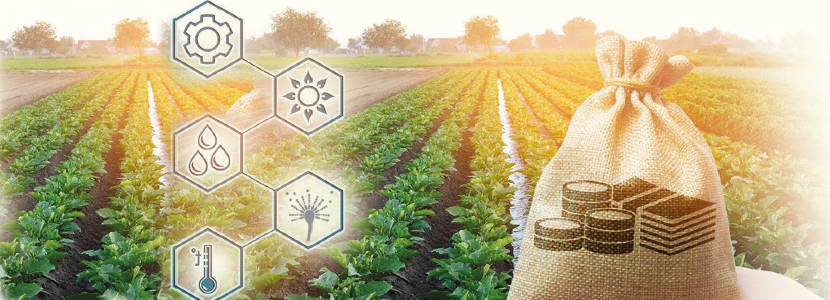Mycotoxin neutralization through the use of adsorbent substances presents a potential alternative to deal with a major food security problem.
According to data provided by FAO, more than 25% of agricultural production is contaminated by mycotoxins. In the US alone, this represents economic losses of around one billion euros a year.
In addition to this, large quantities of basic food products are spoiled by mycotoxins:
As a result, many countries have adopted severe regulations to limit mycotoxin exposure. This has had an impact on on crop and animal markets.
Mycotoxins can contaminate crops in two ways:
- In living plants
- Later during the harvest
Among mycotoxins,aflatoxin B1 and M1, secreted in milk, have been shown to be the most toxic, with carcinogenic effects in animals and humans.
However, currently there are no large-scale practical solutions to combat contamination with fungal by-products in food, using low-cost methodologies.
One of the most promising approaches to solving the mycotoxin problem is the addition of non-nutritive adsorbent materials to food batches, to control gastrointestinal absorption of these fungal metabolites.
Methods of use of adsorbent materials
The main physicochemical and structural characteristics which affect the reactivity of adsorbent materials are described below:
- Particle size: Adsorbent materials must have a small particle size, of the order of microns or less, for colloidal effects to begin to manifest.
- Specific area: the greater the surface area, the greater the number of adsorption points available. An increase in surface area increases the reactivity of materials that perform adsorption through weak bonds.
- Pore size: Pore sizes largely justify the reactivity and adsorption capabilities of adsorbent materials.
- Loading of adsorbent materials: Charges, like surface area, are the result of the shape and size of particles. Depending on the pH of the environment, the surface functional groups will be found in their acidic form or in the corresponding conjugate base. It should be noted that all the studied adsorbent materials have the characteristics of weak acids, although this effect is manifested to a greater extent in aluminosilicates.
Results and Analysis of adsorbent materials
First group: siliceous inorganic adsorbents
This group of materials consists of derivatives of aluminosilicates and clays.
Clay is a granulometric term for those materials with a particle size less than 2 microns.
Today, a great effort is made to study both natural and synthetic clay minerals, in order to understand their behavior and develop tailor-made solutions in different problems, using clay minerals, since these have excellent possibilities in the field of biosciences.
In particular, smectites have been used for various applications. For agriculture and environmental applications these are used within animal feed to promote anti-caking effects, as pelletizing adjuvants or as additives to promote feces consolidation(Ferrario et al. , 2000).
They are also used as an adsorbent for gastrointestinal gases and mycotoxins, or cyanobacterial hepatotoxins(Huwig et al., 2001).Even the inactivation of viruses and bacteria through adsorption is being investigated(Auerbach et al. , 2004).
Other siliceous materials: materials such as diatomaceous earth (diatomite or Kieselgurh) can be included.
Figure 1. Structural scheme of the Zeolite
Images taken from the International Commission of Natural Zeolites.
Second group: activated carbon adsorbents
Under this generic term, a family of carbonaceous adsorbents/adsorbents of high specific surface area and large number of internal pores is included. Figure 2 shows the ultrastructure of this material in an SEM image.
There is a wide variety of activated carbon products that show different characteristics, depending on the starting material and the activation technique used in their production.
Figure 2. Activated carbon SEM micrograph.
Third group: adsorbents based on yeast cell wall extracts
The main components of yeast cell walls (S. Cerevisiae) are the β-glucans, glucomannans, and mannoproteins (Figure 3) (Kogan and Kocher, 2007).
About 75% of the dry weight of the cell wall of yeasts is made up of polysaccharides
The cell wall, a shell that is located on the outside of the cell membrane, has two sheets:
Most of the mannoproteins are bound to the inner lamina of the glucan. Glucomannans and mannoproteins are responsible for interactions with the external environment. The β-glucans consist of glucose units linked by β-1.3 and β-1.4 bonds according to Kogan and Kocher (2007) (Figure 3).
Figure 3. Illustration of the composition of yeast cell walls.
The mixed matrices of cellulose and β-glucan are chemically similar, as they consist of glucose units linked by β bonds, but differ greatly in their physico-chemical properties:
- The 1,4 joints: provide rigidity, high crystallinity and low solubility to the matrix
- 1,3 joints: provide flexibility and solubility.
Conclusion
It is concluded that charge movement through the aromaticity in mycotoxins’ chemical structure, especially for the functional groups where the magnitude of dipoles is greater, as in carbonyl groups, are mainly responsible for the adsorption of these biomolecules on the surface of adsorbent materials.
- The small particle size and increases in specific surface area favor these detoxification mechanisms for food products.
The significant results obtained from yeast cell wall extracts are due to the macromolecule size of β-glucans in solutions. This allows them to act as mycotoxin sequestering agents.
- These colloidal suspensions ensure that mycotoxins are retained.
As for inorganic materials, the homogeneous distribution of adsorption points and the low activity of ionic species favor the selective retention of mycotoxins against other nutrients of lower molecular weight.
Among silicates, sepiolite, with high specific area, offers the highest expectations.
[/register]
